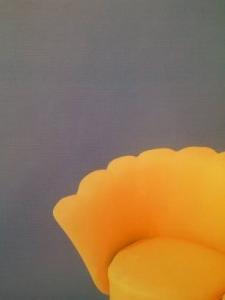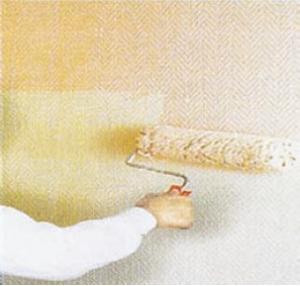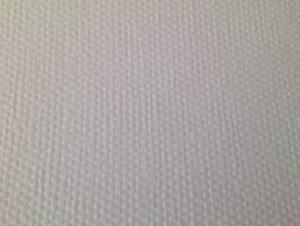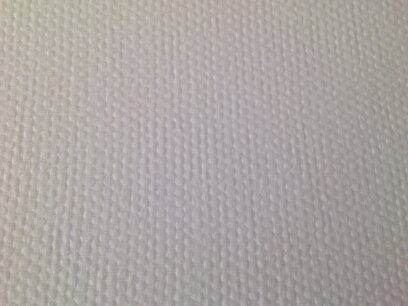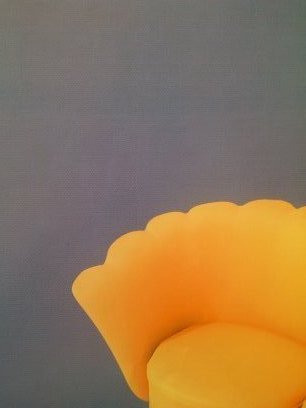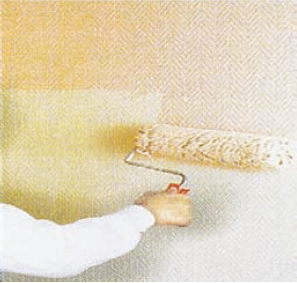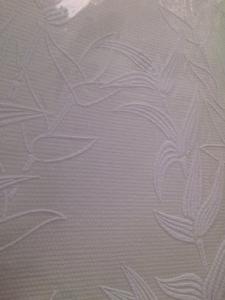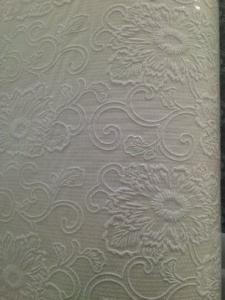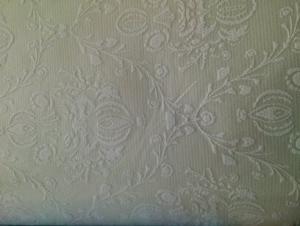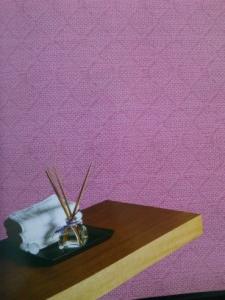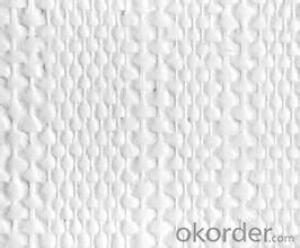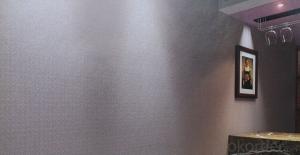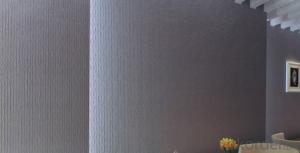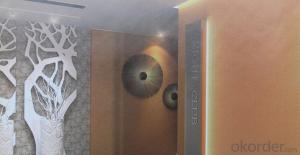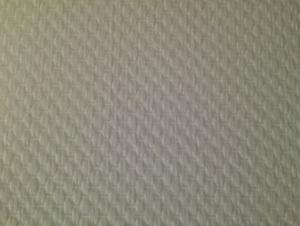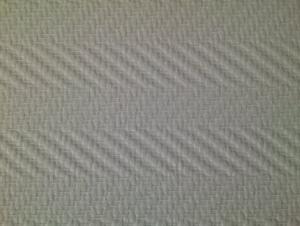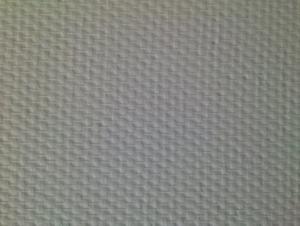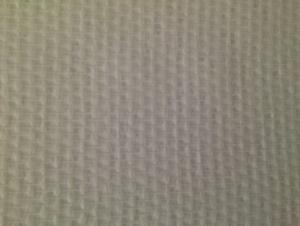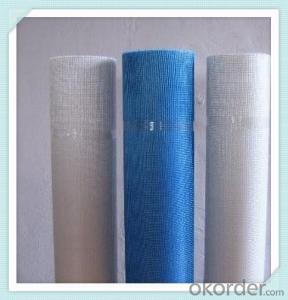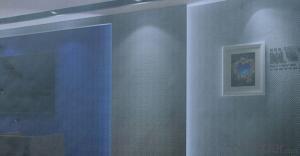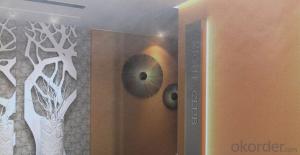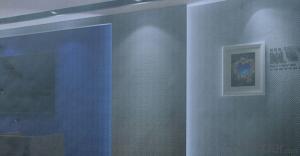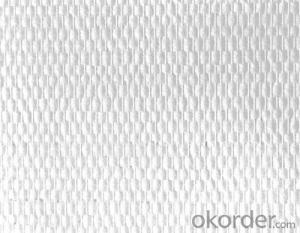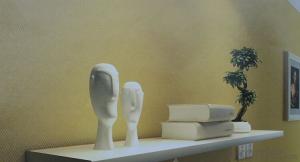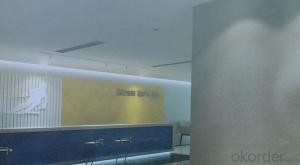Fiberglass Wallcovering Cloth - 175g/m2
- Loading Port:
- China Main Port
- Payment Terms:
- TT or LC
- Min Order Qty:
- 10000M2 m²
- Supply Capability:
- 1000000square meter/month m²/month
OKorder Service Pledge
OKorder Financial Service
You Might Also Like
Product Description of Fiberglass Wallcovering:
Fiberglass wallcovering cloth, that combines the versatility of paint, from latex to epoxy, with the strength and benefits of woven fiberglass textile yarns to meet the most demanding wall finish requirements. Fiberglass textile yarns, as a kind of natural materials, are woven into various textures and patterns and then treated with a natural starch binder for dimensional stability during the hanging process.
Advantages of Fiberglass Wallcovering:
* Environment Friendly
* Flame Retardant
* Air Permeability
* Shock Resistance
* Waterproofing
* Anti-corrosion
* Abundant Colors & patterns
Application of Fiberglass Wallcovering:
As a high-tech indoor decorating material, fiberglass wallcovering cloth is widely used in resident homes, offices and shops and even cinemas, theatres, hotels and hospital facilities, air ports, office buildings, shopping centers and schools.
Externals picture of Fiberglass Wallcovering :
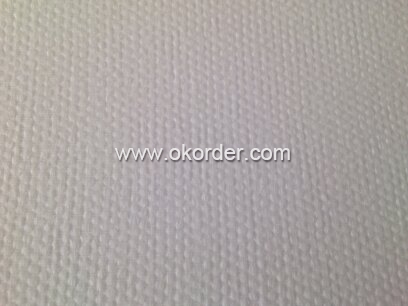
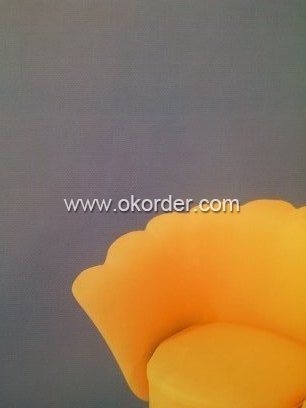
Packaging of Fiberglass Wallcovering :
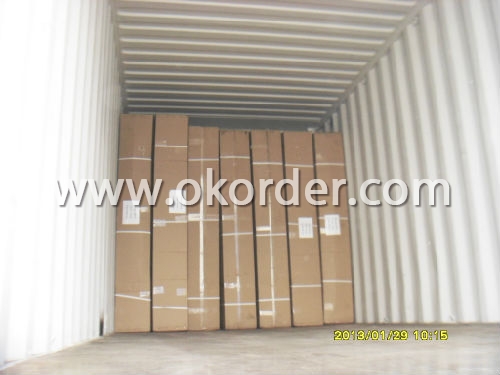
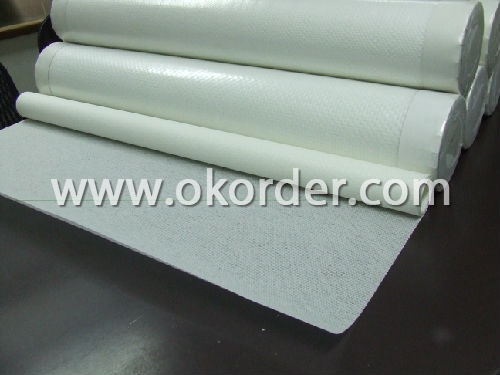
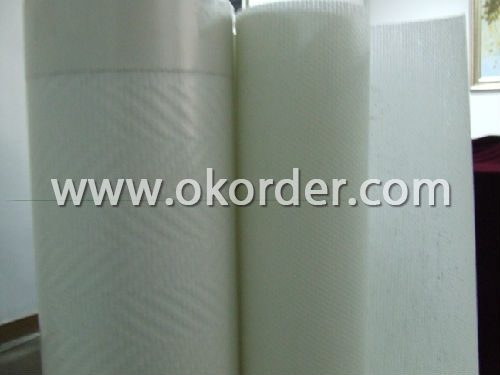
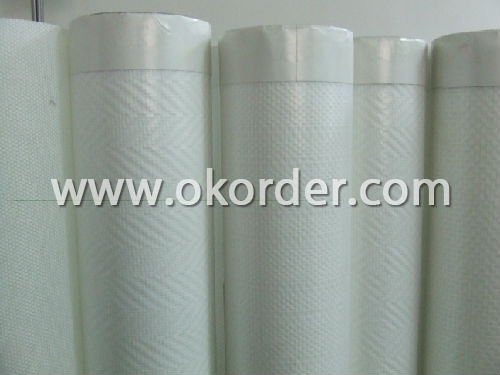
Production of Fiberglass Wallcovering:
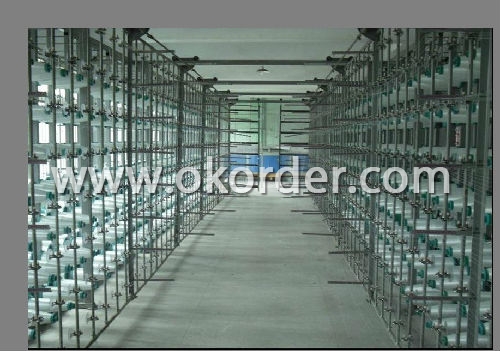
- Q: Can fiberglass wallcovering cloth be used in conjunction with custom lighting fixtures or effects?
- Yes, fiberglass wallcovering cloth can be used in conjunction with custom lighting fixtures or effects. Its flexible and durable nature allows it to be easily installed and manipulated around lighting fixtures, while its translucent properties can enhance the effects of custom lighting, creating a unique and visually appealing environment.
- Q: Is fiberglass wallcovering cloth suitable for use in airports or transportation hubs?
- Yes, fiberglass wallcovering cloth is suitable for use in airports or transportation hubs. Fiberglass is a durable material that can withstand high traffic areas and is resistant to wear and tear. It is also fire-resistant, which is crucial in ensuring the safety of passengers and staff in these public spaces. Additionally, fiberglass wallcovering cloth is easy to clean and maintain, making it a practical choice for areas that experience a high volume of people passing through. Its versatility allows for a wide range of design options, allowing airports and transportation hubs to create aesthetically pleasing environments while still meeting the necessary safety and functional requirements. Overall, fiberglass wallcovering cloth is a suitable choice for use in airports or transportation hubs due to its durability, safety features, and ease of maintenance.
- Q: Is fiberglass wallcovering cloth resistant to humidity?
- Yes, fiberglass wallcovering cloth is resistant to humidity. Fiberglass is known for its durability and resistance to moisture, making it an ideal material for wallcoverings in areas with high humidity levels, such as bathrooms and kitchens. Unlike traditional wallpaper or fabric coverings, fiberglass wallcovering cloth does not absorb moisture, preventing the growth of mold or mildew. Additionally, fiberglass is less prone to warping or peeling in humid conditions, ensuring that the wallcovering remains intact and aesthetically pleasing for a longer period of time.
- Q: Can fiberglass wallcovering cloth be used in retail or commercial office spaces?
- Yes, fiberglass wallcovering cloth can be used in retail or commercial office spaces. It is a durable and fire-resistant material that can withstand heavy traffic and provide a long-lasting solution for walls in these types of environments. Additionally, it offers a wide range of design options and can be easily cleaned and maintained, making it a suitable choice for retail and commercial office spaces.
- Q: Can fiberglass wallcovering cloth be used in exterior art installations or sculptures?
- Yes, fiberglass wallcovering cloth can be used in exterior art installations or sculptures. Fiberglass cloth is known for its durability, weather resistance, and ability to withstand harsh environmental conditions. These properties make it suitable for outdoor applications where the artwork or sculpture needs to withstand exposure to sunlight, rain, wind, and temperature fluctuations. Additionally, fiberglass cloth is lightweight, flexible, and easy to work with, allowing artists and sculptors to shape and mold it according to their artistic vision. It can be used to create intricate details, textures, and patterns, enhancing the overall aesthetic appeal of the installation or sculpture. Furthermore, fiberglass cloth is resistant to rot, decay, and insect damage, ensuring the longevity and longevity of the artwork or sculpture. It is also fire-resistant, providing an added layer of safety in case of accidental fire hazards. However, it is important to note that fiberglass cloth should be properly sealed and coated with a suitable protective finish to enhance its durability and resistance to fading. This will help preserve the appearance and integrity of the artwork or sculpture over time. Overall, fiberglass wallcovering cloth is a versatile and reliable material that can be effectively used in exterior art installations or sculptures, providing artists with the necessary qualities for creating long-lasting and visually stunning outdoor artwork.
- Q: What are the different types of fiberglass wallcovering cloth?
- In the market, one can find a variety of fiberglass wallcovering cloth options. These options differ in terms of composition, texture, and intended use. A popular choice is woven fiberglass cloth. This type is created by weaving thin strands of fiberglass together, resulting in a strong and durable material. Woven fiberglass cloth is commonly used as a foundational layer for wallcoverings, providing stability and strength to the final product. Another option is non-woven fiberglass cloth. This variation is made by bonding or needle-punching fiberglass fibers together, resulting in a textured and flexible material. Non-woven fiberglass cloth is often used in wallcoverings that require a softer and more textured appearance. The texture of the surface can also classify fiberglass wallcovering cloth. There are options available such as smooth, textured, embossed, or patterned fiberglass cloth. These variations allow for different aesthetic choices and can add depth and visual interest to wallcoverings. Furthermore, fiberglass wallcovering cloth can be categorized based on its fire resistance. Certain types of fiberglass cloth are specifically designed to possess fire-resistant properties, making them suitable for use in areas where fire safety is a concern. Overall, the diverse range of fiberglass wallcovering cloth types offers various options for different applications. Whether one requires durability, texture, aesthetics, or fire resistance, there is a type of fiberglass wallcovering cloth available to cater to specific needs and preferences.
- Q: Can fiberglass wallcovering cloth be removed without damaging the walls?
- Yes, fiberglass wallcovering cloth can be removed without damaging the walls if the proper removal techniques are followed. This typically involves softening the adhesive with a wallpaper removal solution and carefully peeling off the cloth. It is important to take precautions and follow instructions to ensure the walls remain undamaged during the removal process.
- Q: Can fiberglass wallcovering cloth be used in conjunction with wainscoting or chair rail?
- Yes, fiberglass wallcovering cloth can be used in conjunction with wainscoting or chair rail. It can provide added durability and protection to the lower portion of the wall, while the wainscoting or chair rail adds aesthetic appeal and serves as a decorative element.
- Q: How does fiberglass wallcovering cloth compare to vinyl wallcovering?
- Fiberglass wallcovering cloth and vinyl wallcovering are both popular choices for wall coverings, but they have some key differences in terms of durability, appearance, and installation. In terms of durability, fiberglass wallcovering cloth generally outperforms vinyl wallcovering. Fiberglass is known for its strength and resistance to tearing, making it a great option for high-traffic areas or locations prone to impacts. Vinyl, on the other hand, can be more prone to scratches and tears, especially in areas where there is heavy use or potential for sharp objects to come into contact with the walls. Appearance is another factor to consider. Fiberglass wallcovering cloth typically has a more textured and natural look compared to vinyl. It can mimic the appearance of fabrics, such as linen or burlap, and can add depth and visual interest to a room. Vinyl, on the other hand, usually has a smoother and more uniform appearance, often with a glossy finish. It can provide a sleek and modern look, but it may not have the same level of visual texture as fiberglass. Installation also differs between the two options. Fiberglass wallcovering cloth is typically installed by applying adhesive directly to the wall and then pressing the cloth onto it. This method can be a bit more time-consuming and requires precision to ensure a smooth and even application. Vinyl wallcovering, on the other hand, is often pre-pasted or peel-and-stick, making it easier and quicker to install. Vinyl can be a good option for DIY projects or for those who prefer a simpler installation process. In summary, fiberglass wallcovering cloth offers superior durability and a textured, natural appearance, but installation can be more involved. Vinyl wallcovering, on the other hand, is easier to install and provides a smooth, uniform look, but may not be as durable in high-traffic areas. Ultimately, the choice between the two will depend on your specific needs, preferences, and the desired aesthetic for your space.
- Q: Can fiberglass wallcovering cloth be used in exterior landscape features or structures?
- No, fiberglass wallcovering cloth is not suitable for exterior landscape features or structures as it is not designed to withstand outdoor weather conditions and may deteriorate over time.
1. Manufacturer Overview
| Location | Shandong,China |
| Year Established | 1964 |
| Annual Output Value | |
| Main Markets | |
| Company Certifications |
2. Manufacturer Certificates
| a) Certification Name | |
| Range | |
| Reference | |
| Validity Period |
3. Manufacturer Capability
| a) Trade Capacity | |
| Nearest Port | |
| Export Percentage | |
| No.of Employees in Trade Department | |
| Language Spoken: | |
| b) Factory Information | |
| Factory Size: | |
| No. of Production Lines | |
| Contract Manufacturing | |
| Product Price Range | |
Send your message to us
Fiberglass Wallcovering Cloth - 175g/m2
- Loading Port:
- China Main Port
- Payment Terms:
- TT or LC
- Min Order Qty:
- 10000M2 m²
- Supply Capability:
- 1000000square meter/month m²/month
OKorder Service Pledge
OKorder Financial Service
Similar products
Hot products
Hot Searches
Related keywords
